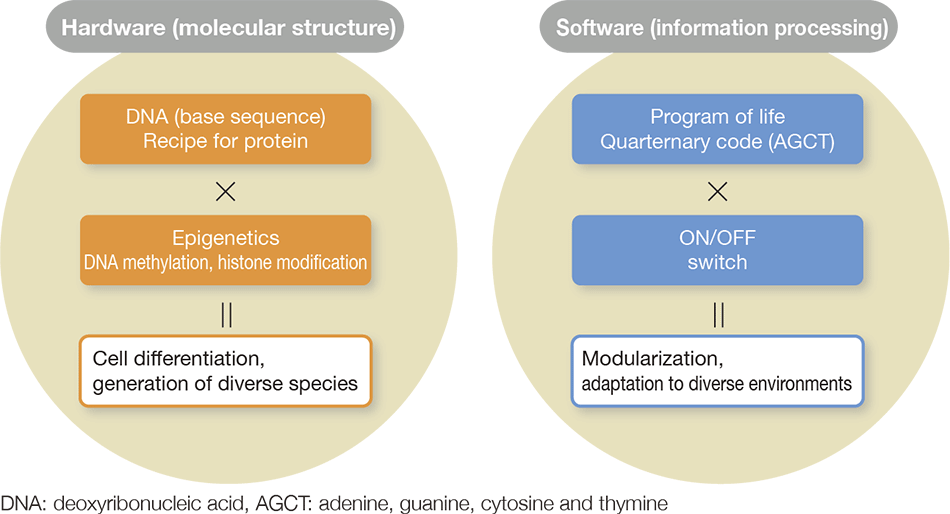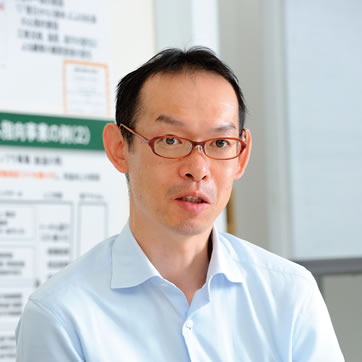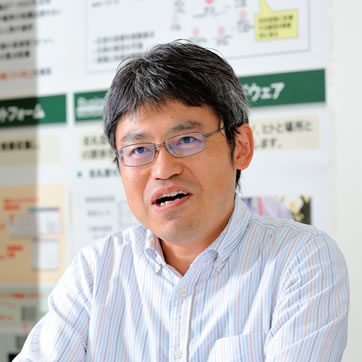Translating the Mechanisms behind the Creativity of Life into Language of Artificial Intelligence
Describe how you approach research into AI that learns from life.
MineThe area we are focusing on is not the brain of living things but their DNA, or deoxyribonucleic acid. Living things have survived changes in their environment through 4 billion years of evolution and this intelligence is written into their DNA. DNA consists of only four different nucleic acids: adenine (A), guanine (G) cytosine (C) and thymine (T) and DNA is the recipe for making body proteins, so to speak. By combining the protein made according to this recipe with external mechanisms that switch the synthesis of proteins within cells on and off, living things have evolved into many different species through the differentiation of simple cells into cells with specific functions.
We approach this as hardware. We regard the mechanisms of growth and evolution of living things as a world of chemistry, in other words, hardware consisting of molecular structures and chemical reactions that make up living things. Alternatively we can also approach this as a world of information processing or as software. In other words, DNA is a program written in a base-four code—a quaternary code of AGCT, and a system that combines the functions of this program with an on/off switch can be regarded as a biological system that will adapt to a constantly changing external environment. Our aim is to translate the mechanisms behind the diversity and creativity of life itself into the language of information processing in order to realize a new type of AI.
Hitachi has done collaborative research with universities in the past. How is this research different?
MineIn past collaborations, Hitachi usually set a clear timeframe for the creation of products and services and collaborated with outside researchers to develop the technology necessary to achieve this. This collaboration is different in the sense that Hitachi is focusing on thinking about the future, a much larger societal challenge. By actually working at Kyoto University, Hitachi’s researchers are able to hold more in-depth, serious discussions and this is also different from previous collaborations. Through in-depth discussions with researchers not only in the field of biology but in a wide range of other academic fields such as engineering, sociology and ethics, Hitachi’s researchers intend to conduct a more far-reaching, in-depth exploration of the challenges facing future society, including the future relationship between people and AI.
TanizakiHitachi The University of Tokyo Laboratory aims to develop a vision for a Super Smart Society (Society 5.0) advocated in the “5th Science and Technology Basic Plan.” Meanwhile, the Hitachi Hokkaido University Laboratory is focusing on exploration of social challenges and proof-of-concept testing using the regional characteristics of Hokkaido. Through collaboration with various partners including universities, Hitachi aims to achieve social innovation originated in Japan, including developing a vision, proving social value in research and development, and forming an ecosystem in anticipation of commercialization.






